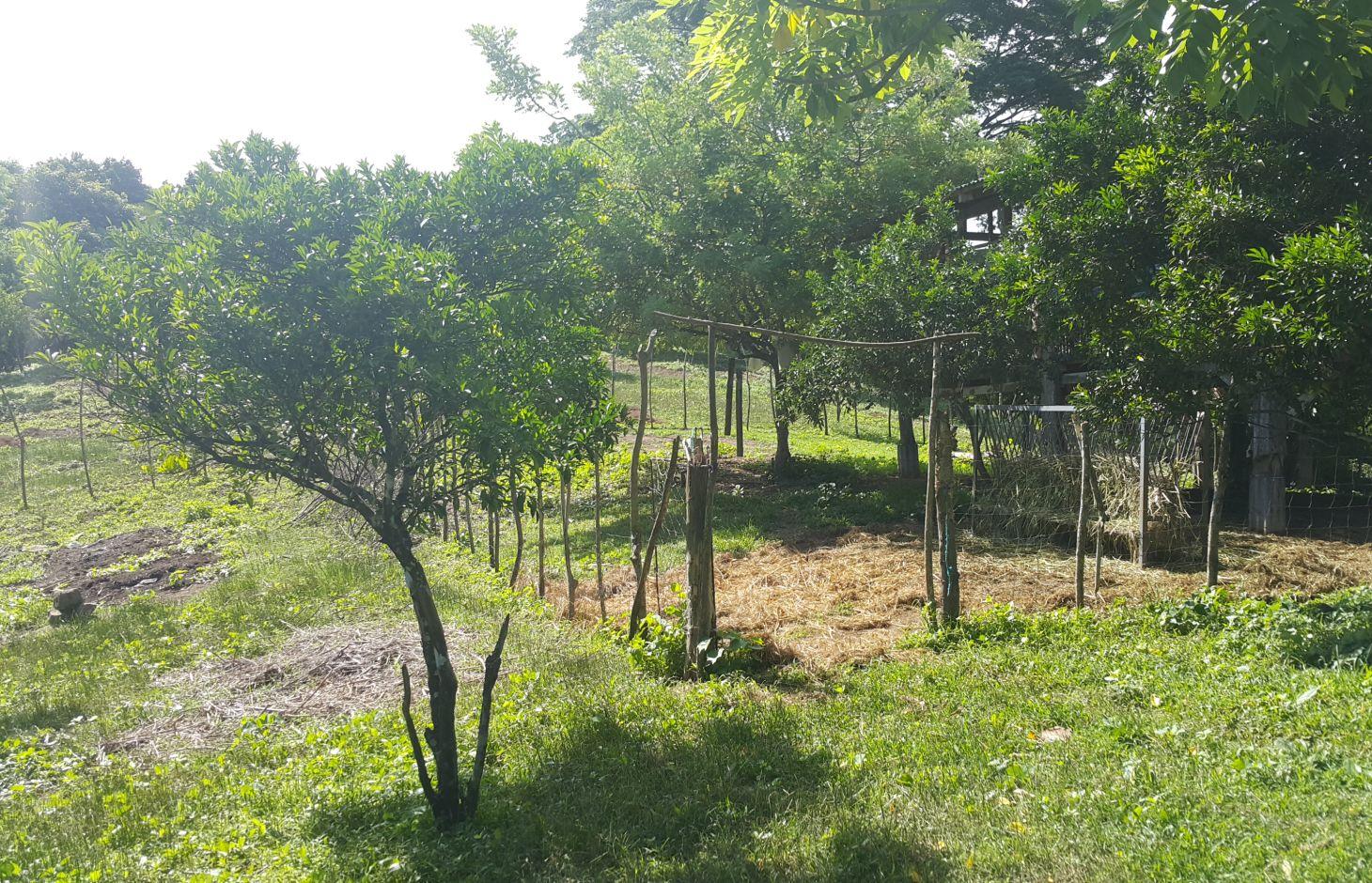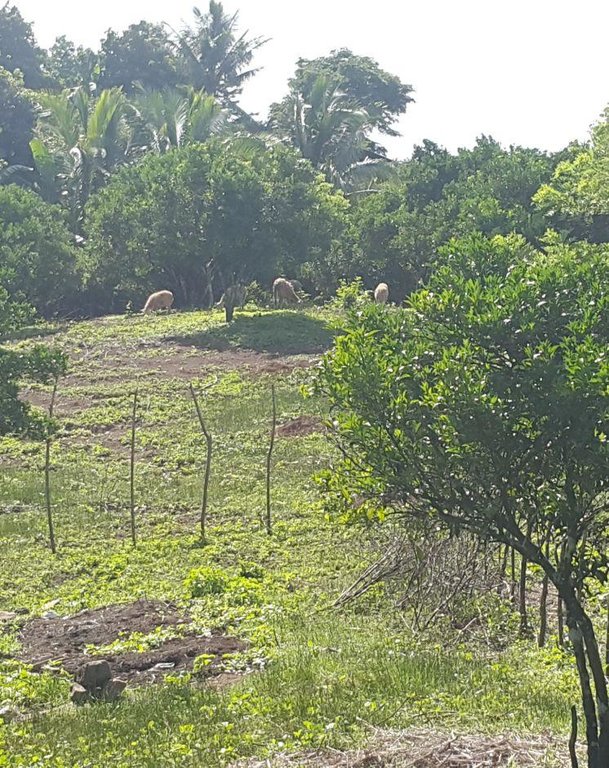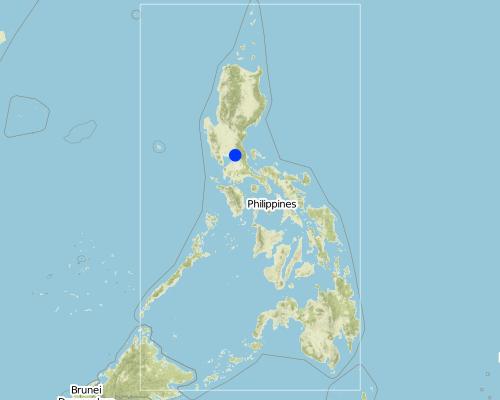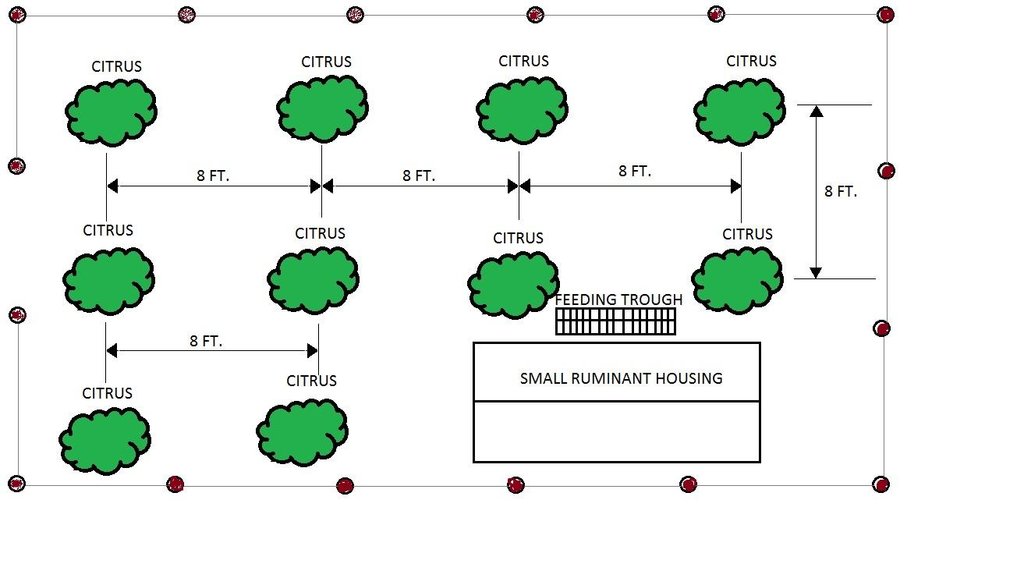Improved pasture under citrus [ฟิลิปปินส์]
- ผู้สร้างสรรค์:
- การอัพเดท:
- ผู้รวบรวม: Philippine Overview of Conservation Approaches and Technologies
- ผู้เรียบเรียง: –
- ผู้ตรวจสอบ: Fabian Ottiger
Pastulan sa ilalim ng dalanghitaan (Filipino)
technologies_1321 - ฟิลิปปินส์
ดูส่วนย่อย
ขยายทั้งหมด ย่อทั้งหมด1. ข้อมูลทั่วไป
1.2 รายละเอียดที่ติดต่อได้ของผู้รวบรวมและองค์กรที่เกี่ยวข้องในการประเมินและการจัดเตรียมทำเอกสารของเทคโนโลยี
วิทยากรหลัก
ผู้เชี่ยวชาญ SLM:
Rojales Jose
(632)9230459
Departement of Agriculture - Bureau of Soils and Water Management
Quezon City Elliptical Road corner Visayas Avenue, Diliman, Quezon City
ฟิลิปปินส์
ผู้เชี่ยวชาญ SLM:
Calonge Arsenio
(632)9230459
Departement of Agriculture - Bureau of Soils and Water Management
Quezon City Elliptical Road corner Visayas Avenue, Diliman, Quezon City
ฟิลิปปินส์
ผู้เชี่ยวชาญ SLM:
Millare Kirby
(632)9230459
Departement of Agriculture - Bureau of Soils and Water Management
Quezon City Elliptical Road corner Visayas Avenue, Diliman, Quezon City
ฟิลิปปินส์
ผู้เชี่ยวชาญ SLM:
Quinto Jasmin
(632)9230459
Departement of Agriculture - Bureau of Soils and Water Management
Quezon City Elliptical Road corner Visayas Avenue, Diliman, Quezon City
ฟิลิปปินส์
ผู้เชี่ยวชาญ SLM:
Gultiano Wilfredo
(632)9230459
Departement of Agriculture - Bureau of Soils and Water Management
Quezon City Elliptical Road corner Visayas Avenue, Diliman, Quezon City
ฟิลิปปินส์
ผู้เชี่ยวชาญ SLM:
Cornes Jennelyn Mae
(632)9230459
Departement of Agriculture - Bureau of Soils and Water Management
Quezon City Elliptical Road corner Visayas Avenue, Diliman, Quezon City
ฟิลิปปินส์
ผู้เชี่ยวชาญ SLM:
ชื่อขององค์กรซึ่งอำนวยความสะดวกในการทำเอกสารหรือการประเมินเทคโนโลยี (ถ้าเกี่ยวข้อง)
Bureau of Soils and Water Management (Bureau of Soils and Water Management) - ฟิลิปปินส์1.3 เงื่อนไขการใช้ข้อมูลที่ได้บันทึกผ่านทาง WOCAT
วันที่เก็บรวบรวมข้อมูล(ภาคสนาม) :
29/06/2016
ผู้รวบรวมและวิทยากรหลักยอมรับเงื่อนไขเกี่ยวกับการใช้ข้อมูลที่ถูกบันทึกผ่านทาง WOCAT:
ใช่
1.5 อ้างอิงไปที่แบบสอบถามเรื่องแนวทาง SLM
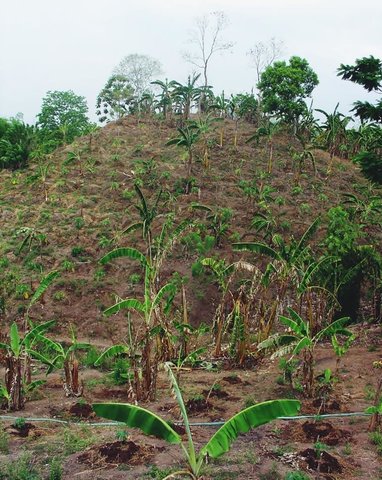
Soil Conservation Guided Farm System [ฟิลิปปินส์]
Soil Conservation Guided Farming System (SCGFS) is a land use management approach that integrates technologies: terracing, agro-pastoral technology, multi-storey cropping, and contouring within the socio-economic and bio-physical limitations of upland areas for optimum development of soil and water resource in a sustainable manner.
- ผู้รวบรวม: Philippine Overview of Conservation Approaches and Technologies
2. การอธิบายลักษณะของเทคโนโลยี SLM
2.1 การอธิบายแบบสั้น ๆ ของเทคโนโลยี
คำจำกัดความของเทคโนโลยี:
It is a farming system that integrates the growing of fodder crops under plantation crops.
2.2 การอธิบายแบบละเอียดของเทคโนโลยี
คำอธิบาย:
It is an integration of livestock and agronomic crop production of incorporating small ruminants in an existing citrus plantation. This technology was based on the private initiative of the farmer where he adapted it from other land users. He further improved it through study of reading materials and ad hoc monitoring of his environment.
Purpose of the Technology: After the adaption of the technology, the land user observed a decrease in the infestation of aphids. The land user observed and concluded that the decline in the aphids infestation was due to the presence of the small ruminants in the area. The small ruminants forage on grasses that were continuously growing, year-round, in the plantation area. The foraging of grasses improved the micro-environment of the plantation crop, which contributed to the decline and almost total eradication of aphids in the area, as observed by the land user. This promoted natural farming and improved the biodiversity.
Establishment / maintenance activities and inputs: The area was first established as a citrus plantation inter-cropped with Vigna unguiculata, Cucurbita maxima, and Ipomoea batatas, as cash crop during the vegetative stage of the citrus crop. As the small ruminants increased in number, the land user decided to do “controlled grazing” by dividing the area into 3 paddocks. During lean days of forage grasses, the land user practices “cut-and-carry” system of feeding. In addition, the manure of the small ruminants serves as a source of organic fertilizer for the citrus and other crops grown by the land user.
Natural / human environment: Aside from the eradication of the aphids on the citrus crop, the technology aided in the financial needs of the land user. It increased the land user’s income by an increase in the fruits bore by the crop and the increase in the number of the small ruminants. The land user sells or sometimes suppliers of citrus fruit and goat meat would go to the area to do wholesale buying. As for the community near the area, they to benefit from the area, by wholesale buying the citrus fruit and be the one selling it to the market. The technology does not only contribute to the livelihood improvement of the land user but also to the community.
2.3 รูปภาพของเทคโนโลยี
2.5 ประเทศภูมิภาค หรือสถานที่ตั้งที่เทคโนโลยีได้นำไปใช้และได้รับการครอบคลุมโดยการประเมินนี้
ประเทศ:
ฟิลิปปินส์
ภูมิภาค/รัฐ/จังหวัด:
Bulacan
ข้อมูลจำเพาะเพิ่มเติมของสถานที่ตั้ง :
City of San Jose Del Monte
Map
×2.6 วันที่การดำเนินการ
ถ้าไม่รู้ปีที่แน่นอน ให้ระบุวันที่โดยประมาณ:
- น้อยกว่า 10 ปี (ไม่นานนี้)
2.7 คำแนะนำของเทคโนโลยี
ให้ระบุว่าเทคโนโลยีถูกแนะนำเข้ามาอย่างไร:
- ด้วยการริเริ่มของผู้ใช้ที่ดินเอง
- experience from other farm land user
ความคิดเห็น (ประเภทของโครงการ เป็นต้น) :
8 years
3. การจัดประเภทของเทคโนโลยี SLM
3.2 ประเภทของการใช้ที่ดินในปัจจุบันที่ได้นำเทคโนโลยีไปใช้

พื้นที่ปลูกพืช
- การปลูกพืชยืนต้นที่ไม่มีเนื้อไม้
พืชหลัก (พืชเศรษฐกิจและพืชอาหาร):
Major cash crop:
Citrus
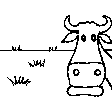
ทุ่งหญ้าเลี้ยงสัตว์
- Silvo-pastoralism
ชนิดพันธุ์สัตว์และผลิตภัณฑ์หลัก:
Goat and sheep grazing in combination
แสดงความคิดเห็น:
Major land use problems (compiler’s opinion): Possibility of pollution in the area. The land user might have applied pesticide to the citrus crops to control the pest, but the land user did not mention of it. Application of herbicide to control the growth of grasses within and outside the area.
Major land use problems (land users’ perception): Without land conservation, there was an occurrence of pest in the citrus plants.
Mixed: (eg agro-pastoralism, silvo-pastoralism): silvo-pastoralism, goat and sheep grazing in combination
Future (final) land use (after implementation of SLM Technology): Mixed: Ms: Silvo-pastoralism
ถ้าการใช้ที่ดินมีการเปลี่ยนแปลงเนื่องมาจากการนำเทคโนโลยีไปปฏิบัติใช้ ให้ระบุการใช้ที่ดินก่อนนำเทคโนโลยีไปปฏิบัติใช้:
Cropland: Cp: Perennial (non-woody) cropping
3.3 ข้อมูลเพิ่มเติมเกี่ยวกับการใช้ที่ดิน
การใช้น้ำของที่ดินที่มีการใช้เทคโนโลยีอยู่:
- จากน้ำฝน
แสดงความคิดเห็น:
Water supply: rainfed, rainfed
จำนวนของฤดูเพาะปลูกต่อปี:
- 1
ระบุ:
Longest growing period in days: 120Longest growing period from month to month: July to November
ความหนาแน่นของปศุสัตว์ (ถ้าเกี่ยวข้อง):
1-10 LU /km2
3.4 กลุ่ม SLM ที่ตรงกับเทคโนโลยีนี้
- การจัดการปลูกพืชร่วมกับปศุสัตว์
- การจัดการศัตรูพืชและโรคพืชแบบผสมผสาน (รวมถึงเกษตรอินทรีย์ด้วย)
3.5 กระจายตัวของเทคโนโลยี
ระบุการกระจายตัวของเทคโนโลยี:
- กระจายไปอย่างสม่ำเสมอในพื้นที่
ถ้าหากว่าเทคโนโลยีได้มีการกระจายออกไปอย่างสม่ำเสมอในพื้นที่ ให้ระบุปริมาณพื้นที่ที่ได้รับการครอบคลุมถึง:
- < 0.1 ตร.กม.(10 เฮกตาร์)
แสดงความคิดเห็น:
Total area covered by the SLM Technology is 0.08 m2.
3.6 มาตรการ SLM ที่ประกอบกันเป็นเทคโนโลยี

มาตรการจัดการพืช
- A1: พืช/สิ่งปกคลุมดิน

มาตรการอนุรักษ์ด้วยวิธีพืช
- V2: หญ้าและไม้ยืนต้น
แสดงความคิดเห็น:
Main measures: agronomic measures
Secondary measures: vegetative measures
Type of agronomic measures: mixed cropping / intercropping, manure / compost / residues
Type of vegetative measures: scattered / dispersed
3.7 รูปแบบหลักของการเสื่อมโทรมของที่ดินที่ได้รับการแก้ไขโดยเทคโนโลยี

การเสื่อมโทรมของดินทางด้านชีวภาพ
- Bp (Increase of pests/diseases): การเพิ่มขึ้นของศัตรูพืชและโรคพืช
แสดงความคิดเห็น:
Main type of degradation addressed: Bp: increase of pests / diseases, loss of predators
Main causes of degradation: crop management (annual, perennial, tree/shrub) (intercropping planting), droughts (time frame of drought)
Secondary causes of degradation: soil management (grazing of small ruminants), overgrazing (no. of small ruminants), change in temperature (dry season time frame)
3.8 การป้องกัน การลดลง หรือการฟื้นฟูความเสื่อมโทรมของที่ดิน
ระบุเป้าหมายของเทคโนโลยีกับความเสื่อมโทรมของที่ดิน:
- ลดความเสื่อมโทรมของดิน
- ฟื้นฟูบำบัดที่ดินที่เสื่อมโทรมลงอย่างมาก
แสดงความคิดเห็น:
Main goals: mitigation / reduction of land degradation
Secondary goals: rehabilitation / reclamation of denuded land
Third goal: prevention of land degradation, rehabilitation
4. ข้อมูลจำเพาะด้านเทคนิค กิจกรรมการนำไปปฏิบัติใช้ ปัจจัยนำเข้า และค่าใช้จ่าย
4.1 แบบแปลนทางเทคนิคของเทคโนโลยี
4.2 ข้อมูลจำเพาะด้านเทคนิคและการอธิบายแบบแปลนทางเทคนิค
Citrus plants are evenly distributed in the area, with a planting distance of 8 feet by 8 feet. The ground cover are forage grasses for the small ruminants.
Location: Barangay San Roque. San Jose Del Monte, Bulacan
Date: 06/29/2016
Technical knowledge required for field staff / advisors: moderate (technical assistance from agricultural advisory from other aspect in land degradation)
Technical knowledge required for land users: high (land user is open minded with the technology introduced)
Main technical functions: improvement of ground cover, stabilisation of soil (eg by tree roots against land slides), increase in organic matter, increase in nutrient availability (supply, recycling,…), increase of biomass (quantity), promotion of vegetation species and varieties (quality, eg palatable fodder)
Secondary technical functions: control of raindrop splash, control of dispersed runoff: impede / retard, control of concentrated runoff: drain / divert, increase of surface roughness, increase of infiltration, reduction in wind speed, spatial arrangement and diversification of land use
Mixed cropping / intercropping
Material/ species: pole sitao-squash-sweet potato/citrus
Agronomic measure: intercropping (1st Year)
Material/ species: pole sitao/citrus
Quantity/ density: 2,000/188
Agronomic measure: intercropping (2nd year)
Material/ species: squash/ citrus
Quantity/ density: 2,000/188
Agronomic measure: intercropping (3rd year)
Material/ species: sweet potato/ citrus
Quantity/ density: 8,800/188
Manure / compost / residues
Material/ species: goat manure
Quantity/ density: 5,000 kg
Remarks: .5 per square meter
Scattered / dispersed
Vegetative material: G : grass
4.3 ข้อมูลทั่วไปเกี่ยวกับการคำนวณปัจจัยนำเข้าและค่าใช้จ่าย
อื่นๆ หรือสกุลเงินประจำชาติ (ระบุ):
Philippine Peso
ระบุอัตราแลกเปลี่ยนจากดอลลาร์สหรัฐเป็นสกุลเงินท้องถิ่น (ถ้าเกี่ยวข้อง) คือ 1 เหรียญสหรัฐ =:
47.5
ระบุค่าเฉลี่ยของค่าจ้างในการจ้างแรงงานต่อวัน:
5.26
4.4 กิจกรรมเพื่อการจัดตั้ง
| กิจกรรม | ประเภทของมาตรการ | ช่วงเวลาดำเนินการ | |
|---|---|---|---|
| 1. | rotational grazing | ด้วยวิธีพืช | rainy season |
| 2. | cut-and-carry feeding system | ด้วยวิธีพืช | dry season |
| 3. | Buying pole sitao | จัดการพืช | |
| 4. | Buying sqaush | จัดการพืช | |
| 5. | Buying citrus | จัดการพืช |
4.5 ค่าใช้จ่ายของปัจจัยนำเข้าที่จำเป็นสำหรับการจัดตั้ง
| ปัจจัยนำเข้า | หน่วย | ปริมาณ | ค่าใช้จ่ายต่อหน่วย | ค่าใช้จ่ายทั้งหมดต่อปัจจัยนำเข้า | %ของค่าใช้จ่ายที่ก่อให้เกิดขึ้นโดยผู้ใช้ที่ดิน | |
|---|---|---|---|---|---|---|
| แรงงาน | Labour | ha | 1.0 | 10.52 | 10.52 | 100.0 |
| วัสดุด้านพืช | Seeds | ha | 1.0 | 3160.0 | 3160.0 | 100.0 |
| วัสดุด้านพืช | Seedlings | ha | 1.0 | 48.0 | 48.0 | 100.0 |
| วัสดุสำหรับก่อสร้าง | Hog wire | ha | 1.0 | 397.89 | 397.89 | 100.0 |
| ค่าใช้จ่ายทั้งหมดของการจัดตั้งเทคโนโลยี | 3616.41 | |||||
แสดงความคิดเห็น:
Duration of establishment phase: 12 month(s)
Life span of products:
Pole Sitao - 1 year
Squash - 1 year
Citrus - 50 years
4.7 ค่าใช้จ่ายของปัจจัยนำเข้าและกิจกรรมที่เกิดขึ้นเป็นประจำที่ต้องการการบำรุงรักษา (ต่อปี)
| ปัจจัยนำเข้า | หน่วย | ปริมาณ | ค่าใช้จ่ายต่อหน่วย | ค่าใช้จ่ายทั้งหมดต่อปัจจัยนำเข้า | %ของค่าใช้จ่ายที่ก่อให้เกิดขึ้นโดยผู้ใช้ที่ดิน | |
|---|---|---|---|---|---|---|
| แรงงาน | Labour | ha | 1.0 | 10.52 | 10.52 | 100.0 |
| ค่าใช้จ่ายทั้งหมดของการบำรุงรักษาสภาพเทคโนโลยี | 10.52 | |||||
แสดงความคิดเห็น:
The above costs usually occurs during the dry season when forage grasses are scarce. Lean months of availability of forages grasses are from the months April to June. This is the time the cut-and-carry method is applied and the start of the maintenance/recurrent cost.
4.8 ปัจจัยสำคัญที่สุดที่มีผลกระทบต่อค่าใช้จ่าย
ปัจจัยสำคัญที่สุดที่มีผลกระทบต่อค่าใช้จ่ายต่างๆ:
Cut-and-carry method of feeding the small ruminants during lean months of forage grasses.
5. สิ่งแวดล้อมทางธรรมชาติและของมนุษย์
5.1 ภูมิอากาศ
ฝนประจำปี
- < 250 ม.ม.
- 251-500 ม.ม.
- 501-750 ม.ม.
- 751-1,000 ม.ม.
- 1,001-1,500 ม.ม.
- 1,501-2,000 ม.ม.
- 2,001-3,000 ม.ม.
- 3,001-4,000 ม.ม.
- > 4,000 ม.ม.
ระบุปริมาณน้ำฝนเฉลี่ยรายปี (ถ้ารู้) :หน่วย ม.ม.
2382.00
เขตภูมิอากาศเกษตร
- กึ่งชุ่มชื้น
Thermal climate class: tropics
5.2 สภาพภูมิประเทศ
ค่าเฉลี่ยความลาดชัน:
- ราบเรียบ (0-2%)
- ลาดที่ไม่ชัน (3-5%)
- ปานกลาง (6-10%)
- เป็นลูกคลื่น (11-15%)
- เป็นเนิน (16-30%)
- ชัน (31-60%)
- ชันมาก (>60%)
ธรณีสัณฐาน:
- ที่ราบสูง/ที่ราบ
- สันเขา
- ไหล่เขา
- ไหล่เนินเขา
- ตีนเนิน
- หุบเขา
ระดับความสูง:
- 0-100 เมตร
- 101-500 เมตร
- 501-1,000 เมตร
- 1,001-1,500 เมตร
- 1,501-2,000 เมตร
- 2,001-2,500 เมตร
- 2,501-3,000 เมตร
- 3,001-4,000 เมตร
- > 4,000 เมตร
ให้ระบุถ้าเทคโนโลยีได้ถูกนำไปใช้:
- บริเวณแอ่งบนที่ราบ (concave situations)
ความคิดเห็นและข้อมูลจำเพาะเพิ่มเติมเรื่องสภาพภูมิประเทศ:
Landforms: Ridges (concave)
5.3 ดิน
ค่าเฉลี่ยความลึกของดิน:
- ตื้นมาก (0-20 ซ.ม.)
- ตื้น (21-50 ซ.ม.)
- ลึกปานกลาง (51-80 ซ.ม.)
- ลึก (81-120 ซ.ม.)
- ลึกมาก (>120 ซ.ม.)
เนื้อดิน (ดินชั้นบน):
- ปานกลาง (ดินร่วน ทรายแป้ง)
อินทรียวัตถุในดิน:
- ปานกลาง (1-3%)
(ถ้ามี) ให้แนบคำอธิบายเรื่องดินแบบเต็มหรือระบุข้อมูลที่มีอยู่ เช่น ชนิดของดิน ค่า pH ของดินหรือความเป็นกรดของดิน ความสามารถในการแลกเปลี่ยนประจุบวก ไนโตรเจน ความเค็ม เป็นต้น:
Soil fertility is: Medium
Soil drainage/infiltration is: Good
Soil water storage is: High
5.4 ความเป็นประโยชน์และคุณภาพของน้ำ
น้ำไหลบ่าที่ผิวดิน:
ดี
คุณภาพน้ำ (ที่ยังไม่ได้บำบัด):
เป็นน้ำใช้เพื่อการเกษตรเท่านั้น (การชลประทาน)
5.5 ความหลากหลายทางชีวภาพ
ความหลากหลายทางชนิดพันธุ์:
- ปานกลาง
5.6 ลักษณะของผู้ใช้ที่ดินที่นำเทคโนโลยีไปปฏิบัติใช้
แนวทางการตลาดของระบบการผลิต:
- เพื่อการยังชีพ (หาเลี้ยงตนเอง)
- ผสม (การเลี้ยงชีพ/ทำการค้า)
รายได้ที่มาจากนอกฟาร์ม:
- 10-50% ของรายได้ทั้งหมด
ระดับของความมั่งคั่งโดยเปรียบเทียบ:
- พอมีพอกิน
เป็นรายบุคคล/ครัวเรือน:
- เป็นรายบุคคล/ครัวเรือน
ระดับของการใช้เครื่องจักรกล:
- งานที่ใช้แรงกาย
เพศ:
- ชาย
ระบุลักษณะอื่นๆที่เกี่ยวข้องของผู้ใช้ที่ดิน:
Land users applying the Technology are mainly common / average land users
Difference in the involvement of women and men: It is the countries socio-cultural model, where men is the one working and the women stay at home. According to the land user it is the women who is record keeper.
Population density: 10-50 persons/km2
Annual population growth: 0.5% - 1%
10% of the land users are average wealthy.
Off-farm income specification: off-farm income provides additional income to the land user during the dry season.
Market orientation: Subsistence (small ruminants are bought by the land user)
5.7 พื้นที่เฉลี่ยของที่ดินที่เป็นเจ้าของหรือเช่าโดยผู้ใช้ที่ดินที่นำเทคโนโลยีไปปฏิบัติใช้
- < 0.5 เฮกตาร์
- 0.5-1 เฮกตาร์
- 1-2 เฮกตาร์
- 2-5 เฮกตาร์
- 5-15 เฮกตาร์
- 15-50 เฮกตาร์
- 50-100 เฮกตาร์
- 100-500 เฮกตาร์
- 500-1,000 เฮกตาร์
- 1,000-10,000 เฮกตาร์
- >10,000 เฮกตาร์
พิจารณาว่าเป็นขนาดเล็ก กลาง หรือขนาดใหญ่ (ซึ่งอ้างอิงถึงบริบทระดับท้องถิ่น):
- ขนาดเล็ก
แสดงความคิดเห็น:
Average area of land owned or leased by land users applying the Technology: < 0.5 ha, < 0.5 ha, 0.5-1 ha, 1-2 ha
5.8 กรรมสิทธิ์ในที่ดิน สิทธิในการใช้ที่ดินและสิทธิในการใช้น้ำ
กรรมสิทธิ์ในที่ดิน:
- รายบุคคล ได้รับสิทธิครอบครอง
สิทธิในการใช้ที่ดิน:
- รายบุคคล
สิทธิในการใช้น้ำ:
- เกี่ยวกับชุมชน (ถูกจัดระเบียบ)
5.9 การเข้าถึงบริการและโครงสร้างพื้นฐาน
สุขภาพ:
- จน
- ปานกลาง
- ดี
การศึกษา:
- จน
- ปานกลาง
- ดี
ความช่วยเหลือทางด้านเทคนิค:
- จน
- ปานกลาง
- ดี
การจ้างงาน (เช่น ภายนอกฟาร์ม):
- จน
- ปานกลาง
- ดี
ตลาด:
- จน
- ปานกลาง
- ดี
พลังงาน:
- จน
- ปานกลาง
- ดี
ถนนและการขนส่ง:
- จน
- ปานกลาง
- ดี
น้ำดื่มและการสุขาภิบาล:
- จน
- ปานกลาง
- ดี
บริการด้านการเงิน:
- จน
- ปานกลาง
- ดี
6. ผลกระทบและสรุปคำบอกกล่าว
6.1 ผลกระทบในพื้นที่ดำเนินการ (On-site) จากการใช้เทคโนโลยี
ผลกระทบทางด้านเศรษฐกิจและสังคม
การผลิต
การผลิตพืชผล
จำนวนก่อน SLM:
3,000 kilograms
หลังจาก SLM:
8,000 kilograms
การผลิตสัตว์
จำนวนก่อน SLM:
5
หลังจาก SLM:
5
ความหลากหลายของผลิตภัณฑ์
การจัดการที่ดิน
รายได้และค่าใช้จ่าย
รายได้จากฟาร์ม
จำนวนก่อน SLM:
30,000
หลังจาก SLM:
80,000
ความหลากหลายของแหล่งผลิตรายได้
ภาระงาน
ผลกระทบทางด้านเศรษฐกิจและสังคมอื่น ๆ
Improved livelihoods and human well-being
แสดงความคิดเห็น/ระบุ:
It gave an opportunity to the neighbors of the land user to work at the field, with pay. Thus, an added income to the neighbor of the land user. According to the land user, he was able to send his children to a decent school for a quality education. It also gave the land user another source of income by purchasing a jeepney used as a public transportation through the increased income from the SLM technogy he adapted.
ผลกระทบด้านสังคมวัฒนธรรมอื่น ๆ
ความมั่นคงด้านอาหาร / พึ่งตนเองได้
แสดงความคิดเห็น/ระบุ:
The increased in the income of the land user contributes to the food security of the family
สถานการณ์ด้านสุขภาพ
แสดงความคิดเห็น/ระบุ:
Daily chores of herding the small ruminants contributes to the good over health of the land user
SLM หรือความรู้เรื่องความเสื่อมโทรมของที่ดิน
แสดงความคิดเห็น/ระบุ:
Rotational grazing and "cut-and-carry" style of feeding contributed to the possible overgrazing which is contributor to erosion
การบรรเทาความขัดแย้ง
สถานการณ์ของกลุ่มด้อยโอกาส ทางด้านสังคมและเศรษฐกิจ
แสดงความคิดเห็น/ระบุ:
The land user allows the member of his community to harvest some fruits and sell them to the market without the land user asking for something in return.
ผลกระทบด้านนิเวศวิทยา
วัฐจักรน้ำหรือน้ำบ่า
ปริมาณน้ำ
คุณภาพน้ำ
น้ำไหลบ่าที่ผิวดิน
แสดงความคิดเห็น/ระบุ:
Rotational grazing and "cut-and carry" style of feeding contributes to the reduction in surface runoff, grasses are maintained on the soil surface
การระบายน้ำส่วนเกิน
น้ำบาดาลหรือระดับน้ำในแอ่งน้ำบาดาล
การระเหย
ดิน
ความชื้นในดิน
สิ่งปกคลุมดิน
แสดงความคิดเห็น/ระบุ:
Maintenance of grasses on the soil surface
การสูญเสียดิน
แสดงความคิดเห็น/ระบุ:
Maintenance of grasses on the soil surface reduced soil in any form
การเกิดแผ่นแข็งที่ผิวดิน /การเกิดชั้นดาน
การอัดแน่นของดิน
การหมุนเวียนและการเติมของธาตุอาหาร
แสดงความคิดเห็น/ระบุ:
Manure of the small ruminants contributes to nutrient recycling
ความเค็ม
อินทรียวัตถุในดิน/ต่ำกว่าดินชั้น C
แสดงความคิดเห็น/ระบุ:
Manure of the small ruminants contributes to the increased in soil organic matter content
ความหลากหลายทางชีวภาพของพืชและสัตว์
พืชพันธุ์ต่างถิ่นที่รุกล้ำเข้ามา
แสดงความคิดเห็น/ระบุ:
Incorporation of small ruminants in the farming system which aid in the maintenance of grasses within the plantation area, helps improve the microclimatic condition inside the plantation area that further reduced alien species invasion
การจัดการศัตรูพืชและโรคพืช
แสดงความคิดเห็น/ระบุ:
Incorporation of small ruminants in the farming system which aid in the maintenance of grasses within the plantation area, helps improve the microclimatic condition inside the plantation area that further increased biological pest/disease control
ลดความเสี่ยงของภัยพิบัติ
ความเสี่ยงจากไฟ
ความเร็วของลม
6.2 ผลกระทบนอกพื้นที่ดำเนินการ (Off-site) จากการใช้เทคโนโลยี
น้ำท่วมพื้นที่ท้ายน้ำ
แสดงความคิดเห็น/ระบุ:
Maintenance of grasses on the soil surface improves soil tilth which further improves infiltration capacity
ความสามารถต้านทานการเปลี่ยนแปลง / ความสามารถในการคัดกรอง
แสดงความคิดเห็น/ระบุ:
Manure of the small ruminants improves the soil tilth, an improved soil tilth improves the buffering/filtering capacity of the soil
ตะกอนที่ถูกพัดพามาโดยลม
แสดงความคิดเห็น/ระบุ:
Maintenance of grasses on the soil surface reduces erosion due to wind
6.3 การเผชิญและความตอบสนองของเทคโนโลยีต่อการเปลี่ยนแปลงสภาพภูมิอากาศที่ค่อยเป็นค่อยไป และสภาพรุนแรงของภูมิอากาศ / ภัยพิบัติ (ที่รับรู้ได้โดยผู้ใช้ที่ดิน)
การเปลี่ยนแปลงสภาพภูมิอากาศที่ค่อยเป็นค่อยไป
การเปลี่ยนแปลงสภาพภูมิอากาศที่ค่อยเป็นค่อยไป
| ฤดู | ประเภทของการเปลี่ยนแปลงสภาพภูมิอากาศที่ค่อยเป็นค่อยไป และสภาพรุนแรงของภูมิอากาศ | เทคโนโลยีมีวิธีการรับมืออย่างไร | |
|---|---|---|---|
| อุณหภูมิประจำปี | เพิ่มขึ้น | ไม่ทราบ |
สภาพรุนแรงของภูมิอากาศ (ภัยพิบัติ)
ภัยพิบัติทางอุตุนิยมวิทยา
| เทคโนโลยีมีวิธีการรับมืออย่างไร | |
|---|---|
| พายุฝนประจำท้องถิ่น | ไม่ทราบ |
| พายุลมประจำท้องถิ่น | ไม่ทราบ |
ภัยพิบัติจากสภาพภูมิอากาศ
| เทคโนโลยีมีวิธีการรับมืออย่างไร | |
|---|---|
| ภัยจากฝนแล้ง | ไม่ค่อยดี |
ภัยพิบัติจากน้ำ
| เทคโนโลยีมีวิธีการรับมืออย่างไร | |
|---|---|
| น้ำท่วมตามปกติ (แม่น้ำ) | ไม่ทราบ |
ผลลัพธ์ตามมาที่เกี่ยวข้องกับภูมิอากาศอื่น ๆ
ผลลัพธ์ตามมาที่เกี่ยวข้องกับภูมิอากาศอื่น ๆ
| เทคโนโลยีมีวิธีการรับมืออย่างไร | |
|---|---|
| ช่วงการปลูกพืชที่ลดลงมา | ไม่ทราบ |
6.4 การวิเคราะห์ค่าใช้จ่ายและผลประโยชน์ที่ได้รับ
ผลประโยชน์ที่ได้รับเปรียบเทียบกับค่าใช้จ่ายในการจัดตั้งเป็นอย่างไร (จากมุมมองของผู้ใช้ที่ดิน)
ผลตอบแทนระยะสั้น:
ด้านบวก
ผลตอบแทนระยะยาว:
ด้านบวกอย่างมาก
ผลประโยชน์ที่ได้รับเปรียบเทียบกับค่าใช้จ่ายในการบำรุงรักษาหรือต้นทุนที่เกิดขึ้นซ้ำอีก เป็นอย่างไร (จากมุมมองของผู้ใช้ที่ดิน)
ผลตอบแทนระยะสั้น:
ด้านบวก
ผลตอบแทนระยะยาว:
ด้านบวกอย่างมาก
6.5 การปรับตัวของเทคโนโลยี
จากทั้งหมดที่ได้รับเทคโนโลยีเข้ามามีจำนวนเท่าใดที่ทำแบบทันที โดยไม่ได้รับการจูงใจด้านวัสดุหรือการเงินใด ๆ:
- 90-100%
แสดงความคิดเห็น:
100% of land user families have adopted the Technology without any external material support
1 land user families have adopted the Technology without any external material support
There is no trend towards spontaneous adoption of the Technology
6.7 จุดแข็ง / ข้อได้เปรียบ / โอกาสของเทคโนโลยี
| จุดแข็ง / ข้อได้เปรียบ / โอกาสในทัศนคติของผู้ใช้ที่ดิน |
|---|
| Decreased in occurrence of pest |
| Increased land user's income |
| Helped the land user's neighbor by profit sharing during harvest of the citrus fruits |
| จุดแข็ง / ข้อได้เปรียบ / โอกาสในทัศนคติของผู้รวบรวมหรือวิทยากรหลัก |
|---|
|
Less labor input How can they be sustained / enhanced? Improve the varietal species of the forage grass |
|
Decreased in occurrence of pest How can they be sustained / enhanced? Maintain the existing micro environment |
| Rotational grazing |
6.8 จุดอ่อน / ข้อเสียเปรียบ / ความเสี่ยงของเทคโนโลยีและวิธีการแก้ไข
| จุดอ่อน / ข้อเสียเปรียบ / ความเสี่ยงในทัศนคติของผู้ใช้ที่ดิน | มีวิธีการแก้ไขได้อย่างไร |
|---|---|
| There was an inbreeding of the small ruminants | Putting another small ruminants of good genetic quality |
| จุดอ่อน / ข้อเสียเปรียบ / ความเสี่ยงในทัศนคติของผู้รวบรวมหรือวิทยากรหลัก | มีวิธีการแก้ไขได้อย่างไร |
|---|---|
| Variety of forage grass is of low quality in terms of crude protein content | Planting of improved variety with a high crude protein content |
| Species of small ruminants are not of good genetic quality in terms of meat quality | Putting of species with a good genetic quality in terms of meat produce |
ลิงก์และโมดูล
ขยายทั้งหมด ย่อทั้งหมดลิงก์

Soil Conservation Guided Farm System [ฟิลิปปินส์]
Soil Conservation Guided Farming System (SCGFS) is a land use management approach that integrates technologies: terracing, agro-pastoral technology, multi-storey cropping, and contouring within the socio-economic and bio-physical limitations of upland areas for optimum development of soil and water resource in a sustainable manner.
- ผู้รวบรวม: Philippine Overview of Conservation Approaches and Technologies
โมดูล
ไม่มีโมดูล


